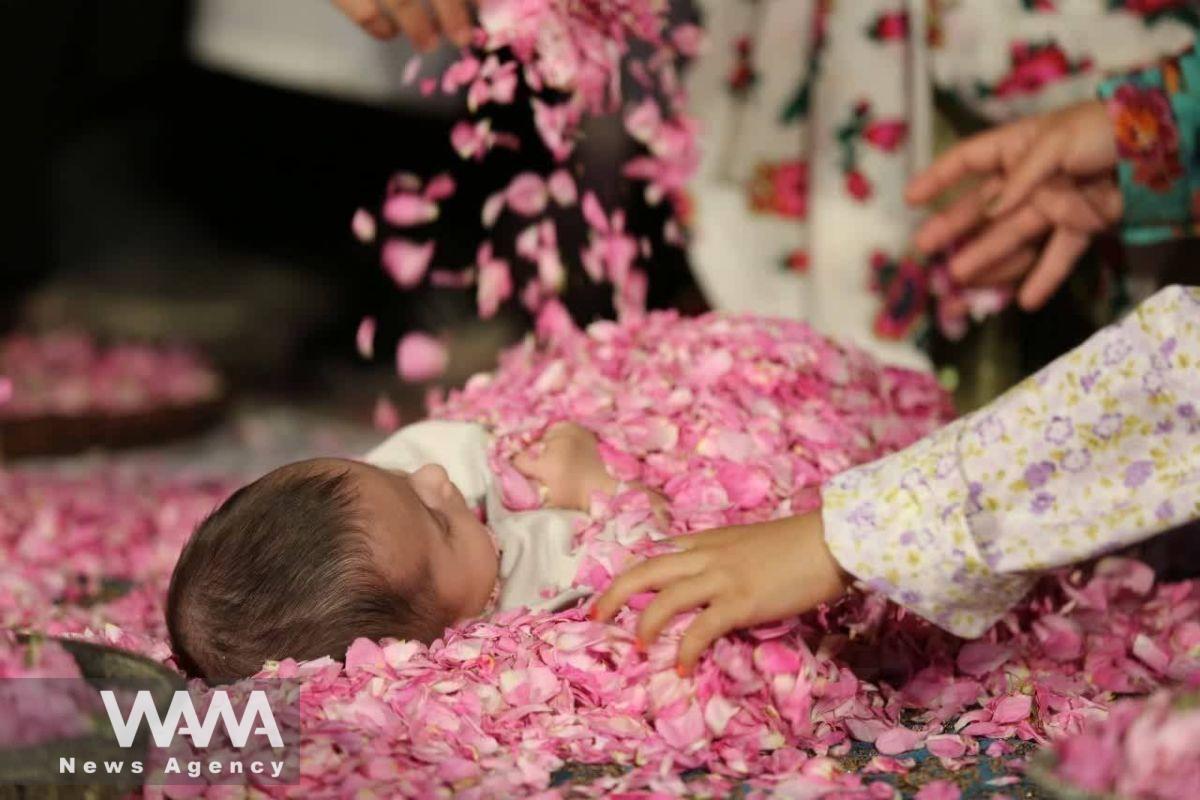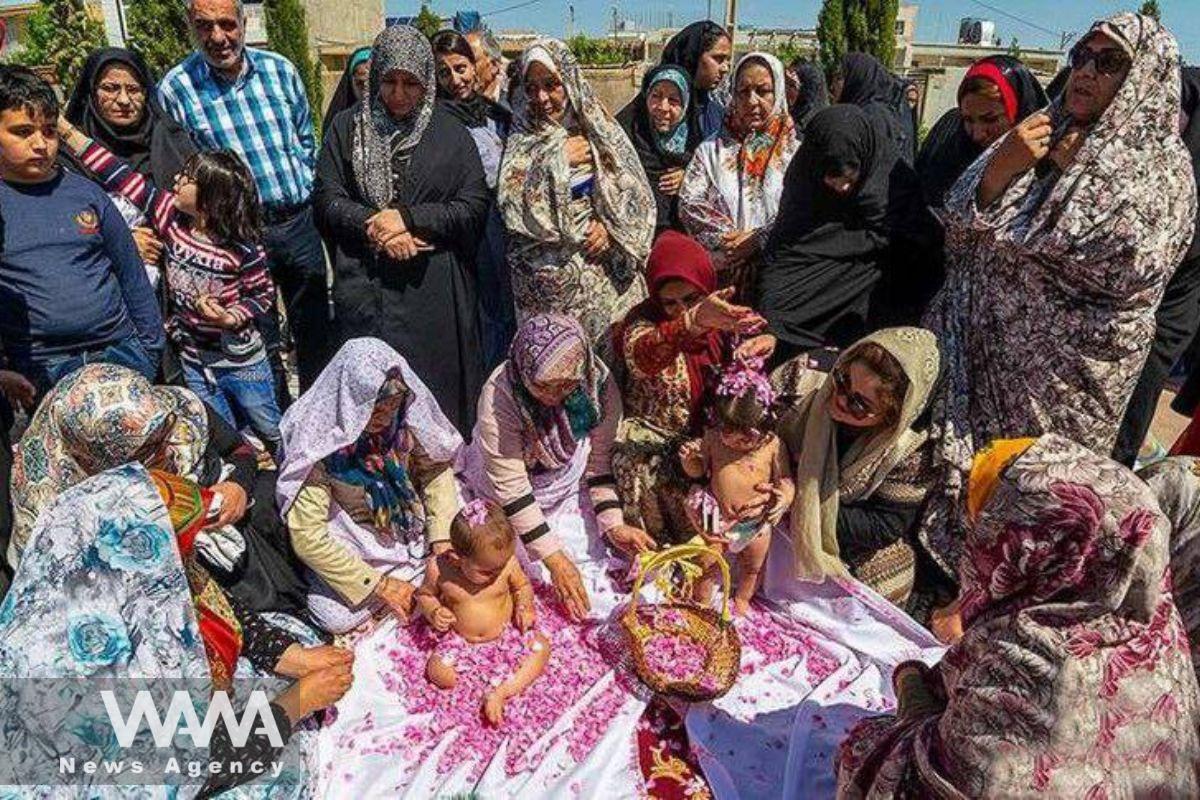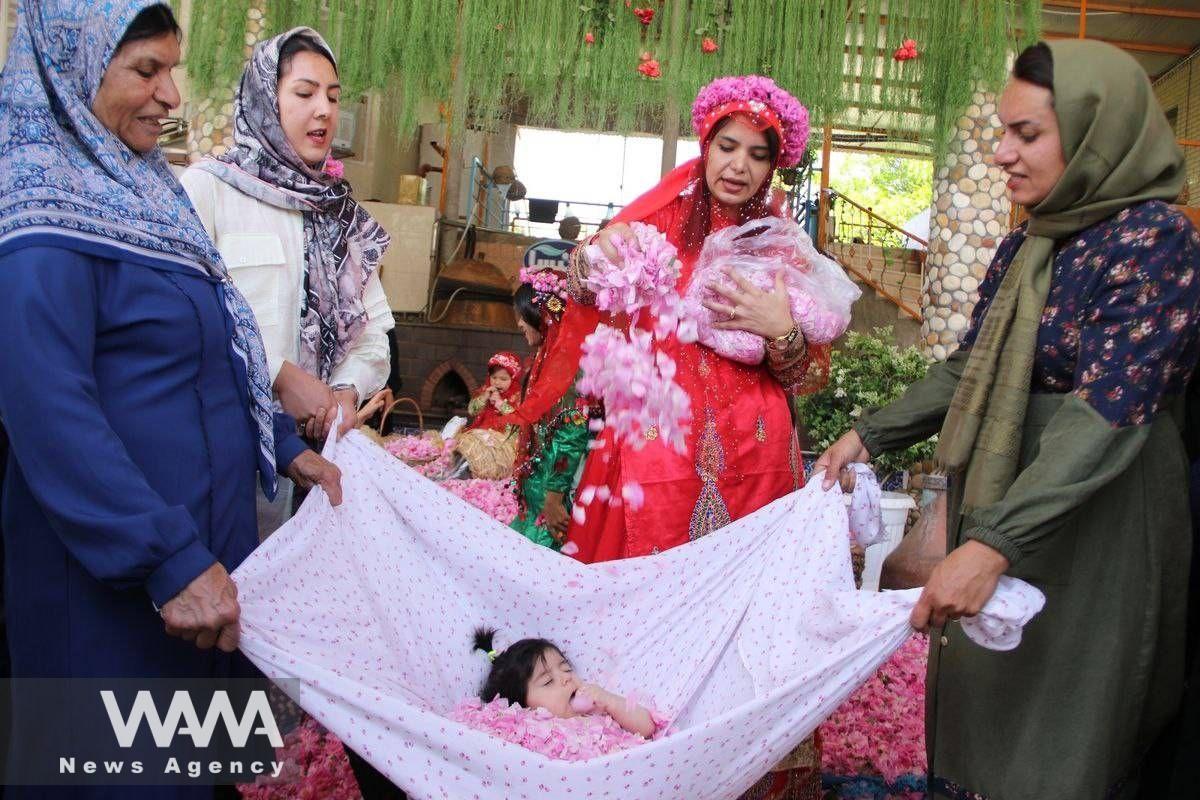The Iranian Baptism of Flowers: “Gol Ghaltan” Ceremony
WANA (May 23) – When the name “Rosewater” is mentioned, the mind instinctively drifts to Persia—a land that has simmered its roses in copper cauldrons to extract the pure essence of softness and healing from their petals for centuries.
Rosewater has found its place everywhere from the luxury kitchens of Paris to beauty salons in Tokyo—a drink for the soul, a remedy for the skin, a fragrance for the spirit.
But what few people know is that within these splendid roses lies a secret—not one bottled in crystal flasks for export, but one that lives on in the modest yet tradition-rich homes of Iran. A ritual still preserved in some desert towns, passed down like a sacred inheritance among families who hold tradition close to the heart.
This ritual is called “Gol Ghaltan” (Rolling in Flowers). A celebration for infants experiencing their first spring. A ceremony for the skin, the breath, and the beginning of life.

On a fragrant day in May, when flowers have just awakened from their winter slumber, a tiny infant is gently rolled among soft, warm petals Mothers and grandmothers, with loving hands and quiet prayers, slowly turn the baby in the blossoms—not for amusement, but for purification. For love. For a bond with nature.
What Is Gol Ghaltan, and Why Is It Held?
The Gol Ghaltan ceremony, or “rolling in flowers,” varies in its details across different cities and regions of Iran. In some places, the ceremony is held on the child’s first birthday. In others, it is performed for infants experiencing the first spring of their lives.
In yet other regions, it takes place on the tenth day after birth. (Some families, aware their babies will be born outside the rose season, collect and refrigerate damask rose petals in advance so they can perform the ritual after the tenth day.) Generally, the ceremony is held to celebrate a newborn’s first spring.
According to local belief, rolling the infant in freshly picked, fragrant rose petals not only prevents skin and bodily ailments but is also especially recommended for reducing seasonal sensitivities and respiratory allergies. It is believed that direct contact between the baby’s body and the pure elements of nature, especially the damask rose, acts as a kind of natural vaccination.

How the Gol Ghaltan Ceremony Is Performed
The ceremony takes place in spring, which coincides with the blooming season of Damask roses, and begins with the picking of fresh roses. The newborn is then laid on a white cloth, and the petals are gently sprinkled over their body.
Four women from the family hold the corners of the cloth and softly roll the baby in the roses, while reciting blessings (salavat), religious chants, and traditional poems passed down from mothers of previous generations.
After the baby is rolled in the roses, they are placed on the ground, and guests place gifts next to the cloth. At the end of the Gol Ghaltan ceremony, attendees are served tea, sweets, and syrup.
Where Is Gol Ghaltan Celebrated in Iran?
The origin of this ancient tradition is the town of Amiriyeh in Damghan, Semnan Province. However, it is also commonly practiced in other cities within the province, such as Shahroud, Miami, and Dizej. Variations of the ceremony are also held in parts of Kashan, Razavi Khorasan, and even Gonabad.

National Registration of the Gol Ghaltan Ritual
The Gol Ghaltan (Rolling in Flowers) ritual was nationally registered in 2010 as the first spiritual ceremony of Semnan Province and the second national ritual after Nowruz, inscribed on Iran’s intangible cultural heritage list. Today, this ceremony has become a cultural and touristic attraction, held annually with the participation of both domestic and international visitors.
The Fate of the Flowers After the Ceremony
The flowers used in the ritual have a special destiny. Many families dry them and place them between the pages of the Qur’an so that the fragrance of that day remains with the child forever. Others keep the flowers to use them on the child’s wedding day—a symbolic connection between the beginning and continuation of life.
If the baby is a boy, the flowers are placed inside his prayer rug and his groom’s outfit; if it is a girl, the flowers are placed among the dowry prayer rugs.

A Baptism With Flowers, Not Water
For Iranians, Gol-Ghaltan is more than just a tradition; it is like a Western baptism, but not with water and in a church, rather with the scent of flowers and the softness of Ordibehesht (the second month of the Iranian calendar).
It is a ritual for purity, connection with nature, and the beginning of life—within the heart of petals, beneath the prayers of mothers, and in the embrace of spring.












